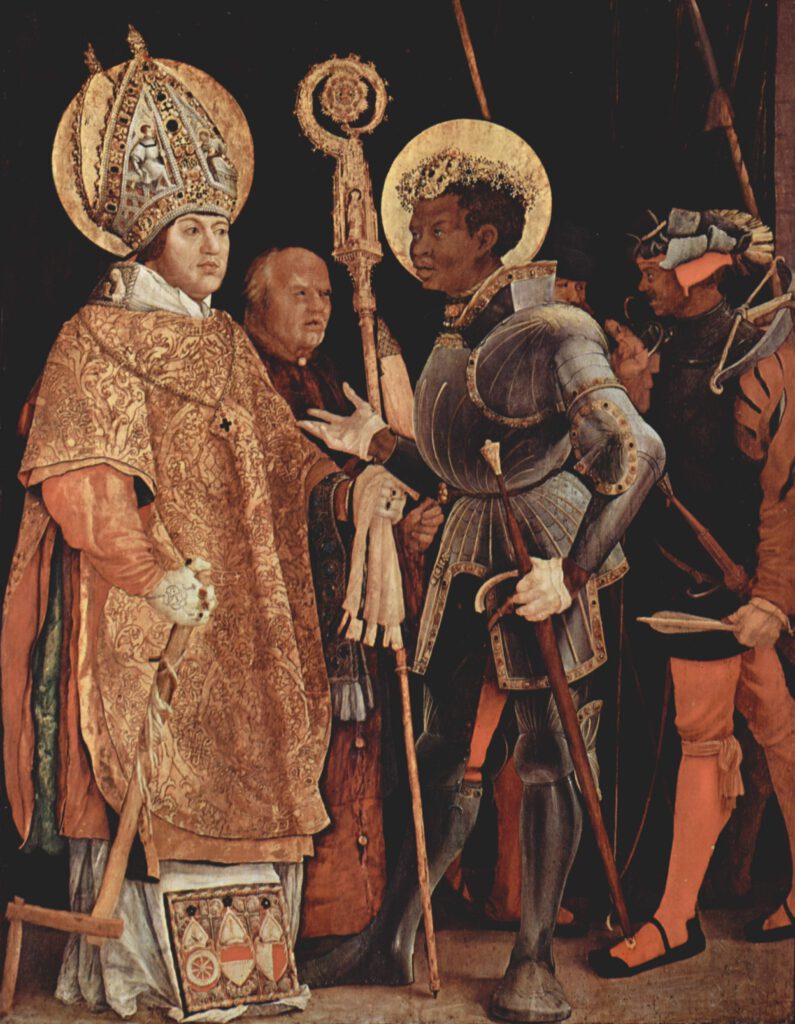In 2019 I went on a road trip through Switzerland, Italy, and France. After passing through Port-Maurice in June, I thought it has a great history to tell. This was originally a Facebook post from that time, but I think it is quite suitable for this blog as well, so here it goes.
A historical part of Imperia is Porto Maurizio (Port-Maurice), whose name refers to Saint Maurice d’Agaune. Saint Maurice was the leader of the legendary Roman Theban Legion in the 3rd century, and one of the favorite and most widely venerated saints of that group.
Read more here: https://en.wikipedia.org/wiki/Saint_Maurice
Maurice was an Egyptian, born in AD 250 in Thebes, at a time when the Mediterranean was ruled by the Roman Empire. Maurice became a soldier in the Roman army. He was gradually promoted until he became the commander of the Theban legion. He was an acknowledged Christian at a time when early Christianity was considered to be a threat to the Roman Empire. Yet, he moved easily within the pagan Roman society of his day. His legion, entirely composed of Christians, had been called to Gaul to assist Emperor Maximian. Because Maurice and his legion refused to kill other Christians, they were executed by order of Emperor Maximian. So reads the earliest account of their martyrdom, contained in the public letter by Bishop Eucherius of Lyon (c. 434–450).
Read more here: https://en.wikipedia.org/wiki/Theban_Legion
The year 476 is generally accepted as the formal end of the Western Roman Empire. That year, Orestes refused the request of Germanic mercenaries in his service for lands in Italy. Led by the Germanic chieftain Odoacer, the dissatisfied mercenaries revolted. Odoacer and his men captured and executed Orestes; weeks later they captured Ravenna and deposed Orestes’ usurper son, Romulus Augustus. This event has been traditionally considered the fall of the Roman Empire in the West. Odoacer quickly conquered the remaining provinces of Italy.
Meanwhile, the Franks emerged in the 3rd century as a term covering Germanic tribes living on the northern Rhine frontier of the Roman Empire. The Kingdom of the Franks (also called Francia) trace back to several of these West Germanic warrior alliances of the Migration Period, mainly formed of Roman Gaul and neighboring Germanic settlement areas on the right side of the the river Rhine. After the fall of Western Rome in the 5th century, within three centuries Francia rose to a great power that dominated large parts of western, central and southern Europe. Under the reign of Charlemagne (768-814) the Francia reached the pinnacle of its power and expansion. Francia, which existed between the 5th and 9th centuries, was the most important imperial formation in Europe since the antique. After the Treaty of Verdun in 843, West Francia became the predecessor of (the Kingdom of) France, and East Francia became that of (the Kingdom of) Germany and the Holy Roman Empire.
Back to Saint Maurice: He served as a patron saint of the army, the infantry, cutlers and armorers and is appealed to before combat, battles, and campaigns. In the Middle Ages he served as the model for all Christian knights. He stood in such high regard that for a time he was the patron saint of the Holy Roman Empire. The Holy Lance, the oldest and one of the most important parts of the Imperial Regalia (Reichskleinodien) of the German kings and emperors of the Holy Roman Empire, was attributed to St. Maurice already in the 11th century. This Holy Lance was legendarily considered as the lance that pierced the side of Jesus as he hung on the cross. The Imperial Sword was attributed to St. Maurice. The Holy Roman Empire ended in 1806 within the Coalition Wars including the Napoleonic Wars in Europe during which the Holy Lance and other parts of the Imperial Regalia (Reichskleinodien) brought from Nuremberg to Vienna to protect them from Napoléon Bonaparte. Later it was considered “magical relic” during Nazi Germany, maybe such as in Raiders of the Lost Ark. However, the insight of the ages of Reformation and Enlightenment (16th to late 18th century) had already demythologized the Holy Lance and its symbolic content.
Read more here: https://en.wikipedia.org/wiki/Holy_Lance
Be that all as it may, next time you pass Porto Maurizio (Port-Maurice) you may remember this part of European history.
© 2023, Andreas Quast. All rights reserved.

